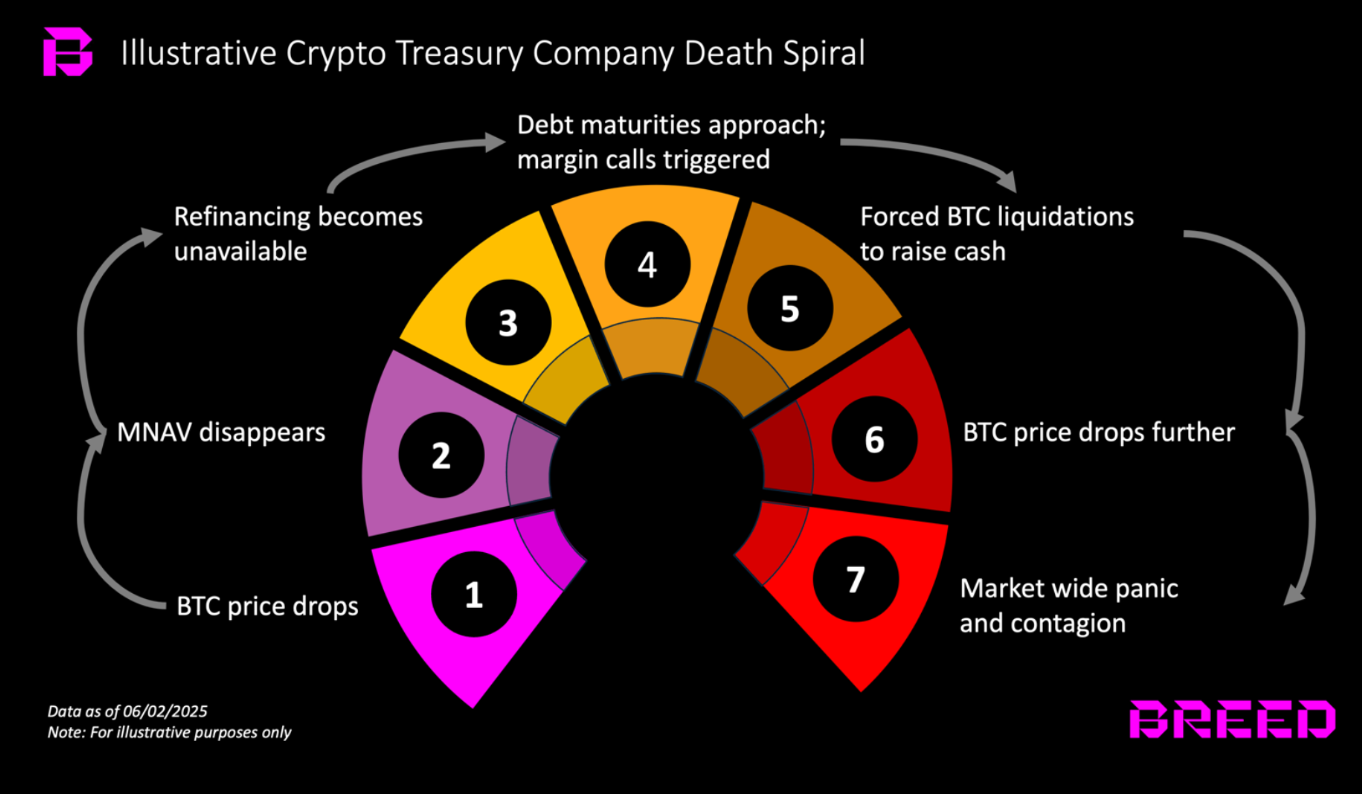From MicroStrategy to startup small-cap stocks, over 250 institutions have already treated BTC as "corporate cash" by 2025. This BTC treasury stock trend challenges traditional financial frameworks while planting the seeds of high-leverage concerns. The venture capital firm Breed report directly points out that if BTC turns downward, many enterprises may fall into a financing drought death spiral.
How Does the Trend Form?
The rise of inflation and legal tender trust crisis have driven enterprises to seek "digital gold". Since the first batch of companies incorporated BTC into their balance sheets in 2020, MicroStrategy's demonstration effect has continued to spread, with token-holding entities spanning enterprises, governments, ETFs, and retirement funds.
Currently, MicroStrategy-owned enterprise BTC accounts for 53%, over 580,000 coins. Other notable companies holding over 10,000 BTC include Block.one (164,000), Tether (100,500), MARA Holdings (49,140), Twenty One (31,500), Riot Platforms (19,200), Galaxy Digital (12,800), CleanSpark (12,100), Tesla (11,500), and Hut 8 (10,300).
Net Asset Value Multiple Becomes Key
The report explains: Companies that simply add Bitcoin to their balance sheet while continuing to focus on core business have valuations primarily determined by these core businesses. However, when a company's sole purpose becomes holding Bitcoin, the situation changes: they choose to be valued based on the Bitcoin they hold.
The market does not grant the highest market value just because a company owns Bitcoin. The market will grant the highest market value when investors believe management can reliably increase the per-share Bitcoin value faster than Bitcoin itself.
Since 2020, MicroStrategy has proven this by repeatedly executing three capital leverage strategies:
Convertible Bonds - Issuing low-interest senior bonds that can only be converted to stocks when the stock price rises 30-50% from the issue date. This enables large low-interest loans while avoiding equity dilution unless performance allows.
Market Stock Issuance - Maintaining a continuous ATM program, selling new stocks when trading prices exceed MNAV, effectively converting dollar-cost averaging into more BTC.
Operational Cash Reinvestment - Using every dollar of free cash flow from traditional business to buy spot BTC.
To attract investors to buy their stocks instead of directly holding BTC, these companies must outperform Bitcoin itself. This outperformance is called premium, or MNAV (Net Asset Value Multiple).
Death Spiral Mechanism
Breed points out that the survival threat lies in a prolonged bear market, which erodes net asset premium as massive debt matures.
It divides the potential death spiral into seven stages: BTC sharp drop, MNAV decline, financing obstruction, margin call, forced selling, continued price decline, ultimately triggering consolidation and potentially the next crypto bear market.
To measure enterprises' price volatility tolerance, Blockstream CEO Adam Back proposed "Months-to-mNAV Cover", which is the number of months BTC earnings can cover MNAV: Metaplanet around 5 months (high growth but high risk); MicroStrategy needs 19 months, relatively stable.

Which Strategy Can Survive
Currently, corporate motivations are roughly divided into two camps: Tesla and Block adopt defensive configurations; MicroStrategy, Semler Scientific, and Metaplanet accumulate through offensive debt and equity strategies.
Most companies belong to the latter, tending to purchase BTC through "stock issuance", with overall leverage still controllable. However, if debt proportion increases in the future, leverage pressure will amplify the death spiral. But the Breed report reveals:
"Without leadership discipline and capital innovation, any Bitcoin treasury stock strategy is just dancing on the edge of high leverage."
Investor Risk Rules
Currently, Bitcoin continues to fluctuate around $107,000, and investors can focus on two key indicators: MNAV premium and Months-to-mNAV Cover.
If BTC significantly retraces and corporate debt rises, the seven-stage chain reaction might trigger a new bear market. Conversely, if companies position BTC as a long-term inflation-resistant reserve and precisely control leverage, the death spiral may not materialize.
The Bitcoin treasury stock strategy is both a counterattack against fiat currency inflation and a test of high-leverage capital operations. Only enterprises with discipline, risk control, and a long-term perspective have a chance to survive until the next bull market.








